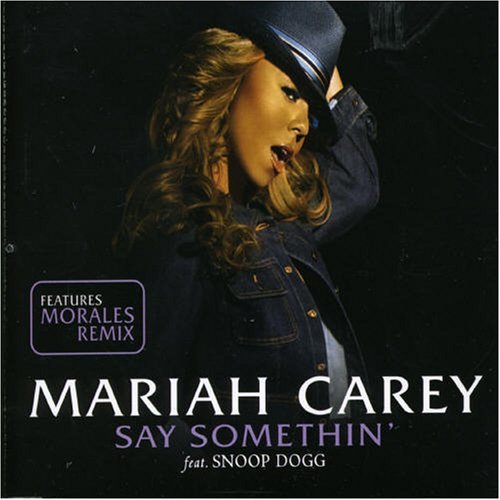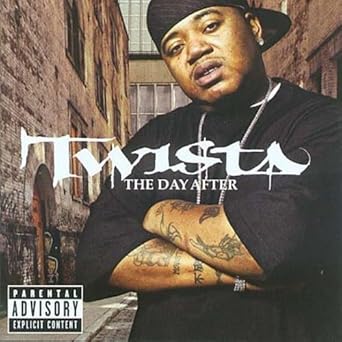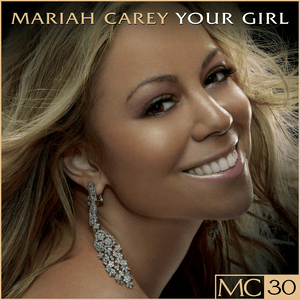
Celebrating 20 Years of The Emancipation of Mimi
The Album that Rescued a Career (2005)
In April 2005, Mariah Carey released The Emancipation of Mimi, marking the beginning of the Emancipation of Mimi 20th anniversary celebrations, her tenth studio album, to an emphatic critical and commercial reception. Coming after a period of relative stagnation – following the lukewarm response to Glitter (2001) and Charmbracelet (2002) – this album marked a stunning comeback. Carey embraced her nickname “Mimi” in the title, signaling a personal rebirth and a confident return to form. The title itself came about during a brainstorming session with LA Reid, when Mariah casually mentioned “Mimi” as her nickname; with “emancipation” already on the table, the two ideas fused seamlessly into what would become an iconic album title.
Blending hip-hop swagger with soulful R&B balladry, Mimi struck a celebratory tone of emancipation and resilience. The album debuted at No. 1 on the US Billboard 200 (her first chart-topping album since 1997) with a career-best opening week of 404,000 copies. Critically, it was lauded as a “highly crafted” dance-pop record and a “relative comeback” for Carey. Fans and critics alike were taken by its confident vocals and polished production, declaring that the Voice had truly returned.

Commercial Triumphs and Accolades
The Emancipation of Mimi went on to become 2005’s best-selling album in the United States, with nearly 5 million copies sold that year alone. It topped charts around the world (No. 1 in the U.S., Greece, and Australia) and hit the top five in major markets like Canada, France, Denmark, and Japan. By the end of its run, the album was certified seven-times Platinum by the RIAA in the U.S. and earned multi-platinum awards in numerous countries – including 2× Platinum in the UK and Platinum in Japan and Europe. In total, Mimi has sold over 13 million copies globally, securing its place among the best-selling albums of the 21st century. The album’s success was fueled by four big singles and unprecedented airplay: Billboard later declared lead single “We Belong Together” the “song of the decade” for the 2000s, and the album itself ranked among Billboard’s Top 200 Albums of All Time.
The album’s accolades matched its sales. The Emancipation of Mimi earned eight Grammy Award nominations, including the coveted Album of the Year, and won three Grammys at the 2006 ceremony. Carey took home Best Contemporary R&B Album, while “We Belong Together” won Best R&B Song and Best Female R&B Vocal Performance. At the same awards, another album cut, “Mine Again,” earned a nomination for Best Traditional R&B Vocal Performance (a testament to the album’s depth).

Carey also dominated the 2005 Billboard Music Awards and World Music Awards on the strength of Mimi. After a long interval without major hits, Carey’s 2005 resurgence – powered by this album – even tied her with Elvis Presley for the second-most Billboard Hot 100 No. 1 singles by a solo artist (17 each at the time) when the Ultra Platinum Edition’s new single “Don’t Forget About Us” hit No. 1. In short, The Emancipation of Mimi not only revitalized Mariah’s career but also added new milestones to her already legendary resume.
Significance and Legacy in Mariah’s Career
For Mariah Carey, Mimi represents a personal and professional triumph. Critics initially dubbed it “the return of The Voice” as the album’s success silenced doubts about her vocal prowess and commercial viability. The project saw Carey confidently reasserting her signature style – merging R&B, pop, and hip-hop – while also exploring new creative partnerships.
She teamed with hitmakers like Jermaine Dupri and Bryan-Michael Cox to recapture the chart-topping magic of her ’90s heyday, and also ventured into fresh territory by collaborating with The Neptunes and Kanye West on edgy, urban tracks. This balance of classic and contemporary paid off: the album’s joyous vibe and emotional ballads attracted both longtime fans and a new generation of listeners.
Carey herself often names The Emancipation of Mimi as one of her favorite and most meaningful albums. It marked her “emancipation” from the struggles of the early 2000s, as she regained control of her artistry and public narrative. The massive success of Mimi paved the way for the next chapters of her career – from a world tour (The Adventures of Mimi in 2006) to a string of subsequent hits and albums that benefited from the momentum it created.
Many of the album’s songs have become enduring staples in her live shows and fan sing-alongs: the gospel closer “Fly Like a Bird,” for example, has been performed at high-profile events (including the 2006 Grammys) and on many tours since its release. Two decades later, The Emancipation of Mimi is remembered not just as a triumphant “comeback album,” but as a reaffirmation of Mariah Carey’s status as an icon who can evolve with the times while staying true to herself.
20th Anniversary Celebration – Deluxe Reissue (2025)
To celebrate the album’s 20th anniversary, Mariah Carey and her label have planned an expansive reissue that will delight collectors and new fans alike. The Emancipation of Mimi (20th Anniversary Edition) is slated for release on May 30, 2025, as a deluxe 5-LP vinyl and digital set. This 40-track (expanded to 45-track on vinyl) collection gathers the original album alongside dozens of bonus tracks, rare remixes, live performances, and previously unreleased material. Carey herself curated the set, diving into the Mimi vault to unearth “forgotten gems” and personal favorites.
One of the most anticipated inclusions is “When I Feel It,” a long-shelved track from the original Mimi sessions. Fans have been aware of this song for years – it was left off the 2005 album due to sample clearance issues stemming from its use of The Dynamic Superiors’ “Here Comes That Feeling.” Its official debut is a centerpiece of the anniversary release. Newslooks reports that “When I Feel It” is finally “cleared for release” after nearly two decades, something Carey calls “exciting… a new gem” to share with the world.
In addition, the deluxe edition features new remixes like a sultry Kaytranada reimagining of “Don’t Forget About Us” and a fresh Esentrik remix of “It’s Like That,” plus a host of classic dance remixes, instrumentals, a cappella versions, and even Carey’s live medley of “Don’t Forget About Us/We Belong Together” from the 2024 AMA 50th Anniversary show. The anniversary package, complete with a 28-page booklet and liner notes, serves as the ultimate victory lap for an album that defined a mid-2000s era in pop/R&B. Mariah’s celebratory reissue not only commemorates past glory but also reminds listeners of the timeless quality of The Emancipation of Mimi – a record that, 20 years on, still feels as emancipating and joyous as ever.
Track-by-Track Breakdown (Original Edition)
Below is a comprehensive breakdown of each track on the original 2005 edition of The Emancipation of Mimi. Each entry includes songwriting credits, context and background, chart performance, remixes, certifications (if applicable), and notable sales information for singles.
“It’s Like That”
Songwriters: Mariah Carey, Jermaine Dupri, Manuel Seal, Johntá Austin
Background: Serving as the album’s lead single, “It’s Like That” was designed to be a bold reintroduction of Mariah Carey to a new era of pop and R&B. In late 2004, Island Records executive L.A. Reid encouraged Carey to create fresh, high-energy singles that would guarantee Mimi‘s impact. She teamed up once again with longtime collaborator Jermaine Dupri, and together with Manuel Seal and Johntá Austin, they delivered what Carey later described as “the right fire-starter.”
This was also one of Mariah’s most fashionable eras, in part thanks to the influence of Vogue news editor André Leon Talley, who encouraged her to take risks with her wardrobe. The “It’s Like That” video, directed by her longtime friend Brett Ratner, was the first major showcase of this shift. Set against the backdrop of an opulent wedding party in a Beverly Hills mansion, and featuring actors Eric Roberts as the groom and Wentworth Miller as the mysterious love interest, the visual opened with glamour and mystery, introducing a narrative that would continue in the “We Belong Together” video.
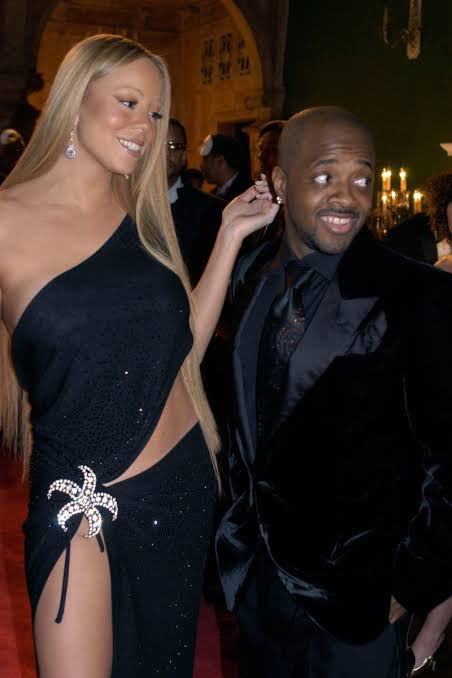
Carey wore an unforgettable black one-shouldered Dsquared2 gown featuring hip cutouts, and the glamorous, high-fashion look matched the elegant and lavish setting of the video, visually redefined her post-Charmbracelet image. The track kicks off the album with exuberant flair, featuring Fatman Scoop’s signature shouts and an irresistible chorus that immediately set a festive tone for the project. It marked a confident and playful rebirth, with Carey embracing the “Mimi” persona and shedding the weight of past industry pressures.
Chart Performance: “It’s Like That” debuted at No. 53 and eventually peaked at No. 16 on the Billboard Hot 100, making it Carey’s highest-charting lead single in years. It also claimed the No. 1 spot on Billboard’s Dance Club Songs chart and became a Top 5 hit in major markets including Japan and the UK, where it reached No. 4. The single was certified Gold in the U.S. (over 500,000 units sold) back in 2005 and is currently well overdue for its Platinum certification. It also earned Gold status in Australia. It served as an unmistakable signal that Carey’s return to chart dominance was underway.
Remixes: The track received a range of remixes that extended its life and broadened its reach. The “So So Def Remix” featured rapper Fat Joe, adding extra street flavor. Legendary producer David Morales contributed a celebrated set of house remixes, most notably the “David Morales Club Mix,” which helped the track soar on dance floors and drove its No. 1 performance on the dance charts. The 20th anniversary reissue includes a fresh remix by Esentrik, who will definitely reimagine the song with his signature smoother grooves and updated sonic textures, further highlighting its timeless appeal.
Certifications & Sales: “It’s Like That” sold over 3 million equivalent copies worldwide across physical and digital formats. In the UK, it achieved Silver status (200,000+ units). While it wasn’t the most commercially successful track on the album, it accomplished its mission as a reinvigorating lead single and set the stage for the historic success that followed with the release of “We Belong Together.”
“We Belong Together”
Songwriters: Mariah Carey, Jermaine Dupri, Manuel Seal, Johntá Austin, with lyrical interpolations credited to Darnell Bristol, Kenneth “Babyface” Edmonds, Sidney DeWayne, Bobby Womack, Patrick Moten, and Sandra Sully due to the use of lyrical references to “If You Think You’re Lonely Now” and “Two Occasions”.
Background: Universally regarded as the crown jewel of The Emancipation of Mimi, “We Belong Together” is a soulful R&B ballad that became Mariah’s biggest hit of the 2000s. Carey and Dupri co-wrote the song in one of their final sessions for the album – a session so inspired that Mariah recalls getting “chills” when they finished the demo.
Lyrically, it’s a classic heartbreak anthem about longing for a lost love, weaving in references to R&B legends like Bobby Womack and Babyface, which earned their original writers interpolation credit. Carey has said that the song’s final belted note was actually unplanned – she typically uses multiple vocal layers and acrobatics to close her songs, but when label executives came to hear the demo, she hadn’t finished the ending. Improvising on the spot, she held the note through to the song’s close, and the team loved it so much she decided to keep it.
The video, directed by Brett Ratner as a direct continuation of the “It’s Like That” storyline, sees Carey leaving her wealthy fiancé (played again by Eric Roberts) at the altar to reunite with her true love, portrayed by Wentworth Miller. Set against the lavish backdrop of a dramatic wedding ceremony in a cathedral, the video heightens the emotional arc of the song and Carey’s narrative persona. For the wedding scenes, Carey wore the same Vera Wang gown she originally wore during her 1993 nuptials to Tommy Mottola, adding a layer of personal history and symbolism to the narrative. With its cinematic visuals, symbolic costume choices, and storybook twist, the video became just as iconic as the track itself and further cemented “We Belong Together” in pop culture history.


Chart Performance: “We Belong Together” was nothing short of a cultural phenomenon. In the U.S., it spent 14 consecutive weeks at No. 1 on the Billboard Hot 100, tying for the second-longest reign in chart history at the time. It topped multiple charts simultaneously, including R&B/Hip-Hop Songs, Mainstream Top 40, and Hot 100 Airplay – breaking records with over 200 million audience impressions in a single week. Billboard named it the No. 1 song of 2005 and later, the Song of the Decade for the 2000s.
Internationally, it reached No. 1 in Australia, No. 2 in the UK and New Zealand, and top five in several European countries. In the U.S., the track is certified 6× Platinum, and in the UK, it has achieved Platinum status for sales nearing 500,000 copies. With its pure sales, digital downloads, and massive streaming numbers across all platforms, the single has sold over 19 million copies worldwide, cementing its place among Carey’s most iconic global hits.
Accolades & Legacy: “We Belong Together” is one of Mariah Carey’s most decorated singles. It won two Grammy Awards in 2006 – Best Female R&B Vocal Performance and Best R&B Song – along with multiple Billboard and ASCAP honors. Its critical and commercial success played a major role in reviving Carey’s career in the mid-2000s, and it continues to be a centerpiece of her live performances. Universally recognized as a heartbreak anthem, it helped define the emotional depth of The Emancipation of Mimi and remains one of the most influential ballads of the modern pop era.
“Shake It Off”
Songwriters: Mariah Carey, Jermaine Dupri, Bryan-Michael Cox, Johntá Austin
Background: “Shake It Off” is a sleek, midtempo R&B jam that finds Mariah decisively “shaking off” an unfaithful lover and moving on with confidence. The song was born out of Carey’s fruitful writing sessions in Atlanta with Jermaine Dupri and his collaborators. It was written over the course of two days alongside “Get Your Number,” and at one point, “Shake It Off” was strongly considered as the album’s lead single.
With its laid-back groove and catchy hook, the track stood out immediately as an empowerment anthem with a splash of sass. Dupri described the sound as “ghetto fabulous,” mixing R&B with elements of hip-hop and pop. Carey injects personality with a tongue-in-cheek voicemail moment in the bridge, making the breakup feel as cool and casual as it is final. Critics praised the track’s simple catchiness and its contrast with the more dramatic ballads on the album.

Music Video: Directed by Jake Nava, the music video for “Shake It Off” follows Mariah as she literally walks away from a life of luxury and betrayal. Filmed in a highly stylized, single-take fashion, the video shows Carey navigating a lavish mansion and moving through high-end settings, symbolizing her liberation. She transitions from a rose petal bath to the city streets, eventually performing in front of her iconic pink “MIMI” backdrop. The seamless transitions between scenes echo the smooth confidence of the song, while fashion moments—including sleek gowns and dramatic exits—further emphasize her reclaiming of personal power. The video was praised for its visual fluidity and became one of the most memorable from the Mimi era.
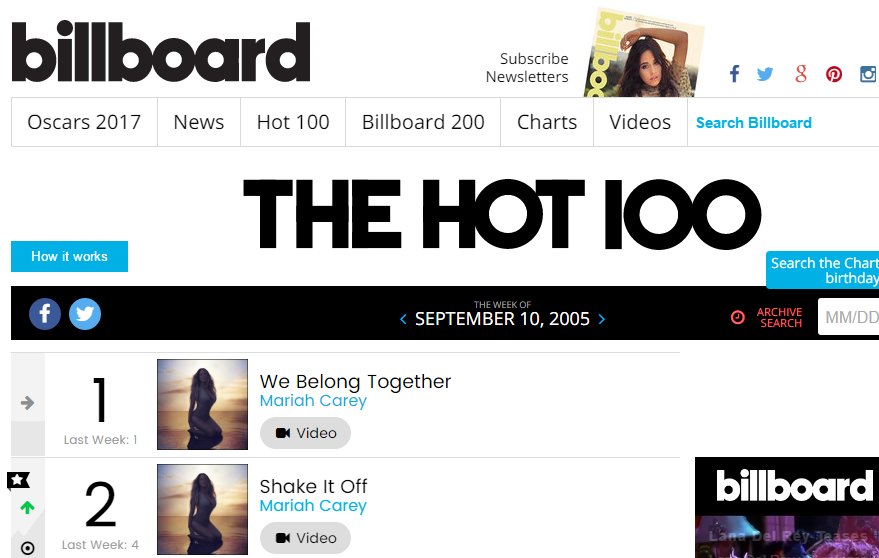
Chart Performance: Released as the third U.S. single in 2005, “Shake It Off” became another huge hit for Carey. It peaked at No. 2 on the Billboard Hot 100, famously kept from the top spot only by her own “We Belong Together,” which was still dominating the charts. This historic chart moment made Carey the first solo female artist to simultaneously hold the No. 1 and No. 2 positions on the Hot 100. “Shake It Off” also topped Billboard’s Hot R&B/Hip-Hop Airplay and Rhythmic charts.
Internationally, the song was paired with “Get Your Number” as a double A-side in several regions and charted strongly—reaching No. 6 in Australia, No. 5 in New Zealand, and No. 9 in the UK. In the U.S., it sold over 829,000 downloads by early 2006 and almost 2 million digital downloads worldwide to date.
Certifications & Legacy: In the U.S., “Shake It Off” has sold over 1.5 million digital copies and benefited from strong ringtone sales at the height of the mid-2000s mobile boom. It’s certified 2× Platinum by the RIAA in 2024 and has surpassed 100 million streams on Spotify alone.
Internationally, it was certified Gold in Australia and Platinum in New Zealand. The song has sold over 4 million equivalent units worldwide to date. Though it didn’t match the cultural saturation of “We Belong Together,” “Shake It Off” carved out a niche as one of Carey’s definitive breakup anthems. Its chart performance—locked just behind her own No. 1 hit—underscored her unmatched dominance during the Mimi era.
“Mine Again”
Songwriters: Mariah Carey, James Poyser
Background: “Mine Again” is a throwback soul ballad that channels the spirit of legends like Aretha Franklin and Gladys Knight. Co-written and produced with James “Big Jim” Wright (of Jimmy Jam & Terry Lewis’s team), the song is built around live piano and a bluesy, gospel-tinged chord progression. Carey described “Mine Again” as the “big power ballad” of the album – a sweeping plea to rekindle a romance, delivered with her full-throated vocal prowess.
The track showcases soaring belts in the chorus and bridge, highlighting the range and emotive power that made her famous. Critics noted that “Mine Again” felt like a deliberate nod to classic soul; indeed, the song’s old-school vibe was so authentic that it garnered industry recognition even without a single release.
Chart Performance: While “Mine Again” was not released as an official single, it managed to chart on its own merits. The strength of the song led to significant R&B radio airplay – enough for it to appear on Billboard’s Hot R&B/Hip-Hop Songs chart, where it peaked at No. 73 (and No. 69 on R&B Airplay) during the album’s run. This is a rare feat for an album cut, and it underscores how much the song resonated with fans of Carey’s ballads.
More importantly, “Mine Again” earned Mariah a Grammy nomination for Best Traditional R&B Vocal Performance at the 48th Grammy Awards (2006). Even though it did not win (losing to an Aretha Franklin performance that year), the nod was a testament to the song’s quality – it put Mariah in competition with soul icons, and critics took notice of her vocal tour-de-force on this track.
Certifications & Legacy: As a non-single track, “Mine Again” did not earn certifications, but its legacy lies in critical appreciation. Many fans and reviewers consider it one of Mariah’s finest vocal performances post-2000.
Across all formats (digital and streaming), the song has earned over 300 thousand equivalent single sales worldwide. The Grammy nomination brought prestige to The Emancipation of Mimi beyond its radio hits, showing that Carey could still deliver old-school R&B excellence. Years later, Vibe and other outlets have listed “Mine Again” among Mariah’s top album tracks, citing the raw emotion and vocal agility on display. In the context of the album’s narrative, “Mine Again” provides a reflective, heartfelt moment amid the uptempo hits – enriching the album’s musical tapestry and reaffirming Mariah Carey’s roots in soul and gospel.
“Say Somethin’ (feat. Snoop Dogg)”
Songwriters: Mariah Carey, Pharrell Williams, Chad Hugo, Calvin “Snoop Dogg” Broadus
Background: Breezy and playful, “Say Somethin’” was a collaboration between Mariah and production duo The Neptunes (Pharrell Williams and Chad Hugo), featuring a guest verse from rap icon Snoop Dogg. In early talks, this funky track was considered as a potential lead single – it was actually one of the first songs recorded for the album, dating back to 2004.
The Neptunes gave “Say Somethin’” a distinctive feel with quirky synths, a bouncing bassline, and Pharrell’s trademark minimalist groove. Over this hip groove, Mariah coos an invitation to a lover to “just say something” if he’s feeling the vibe too. Snoop’s laid-back rap complements the song’s flirtatious tone perfectly. Interestingly, Carey herself had mixed feelings about the track’s fit as a single, often describing it as “very Pharrell” – meaning it had a cool, experimental vibe that differed from her usual radio sound. Ultimately, “Say Somethin’” was held back until later in the album cycle, but it stands out on Mimi as an adventurous crossover of R&B and hip-hop.
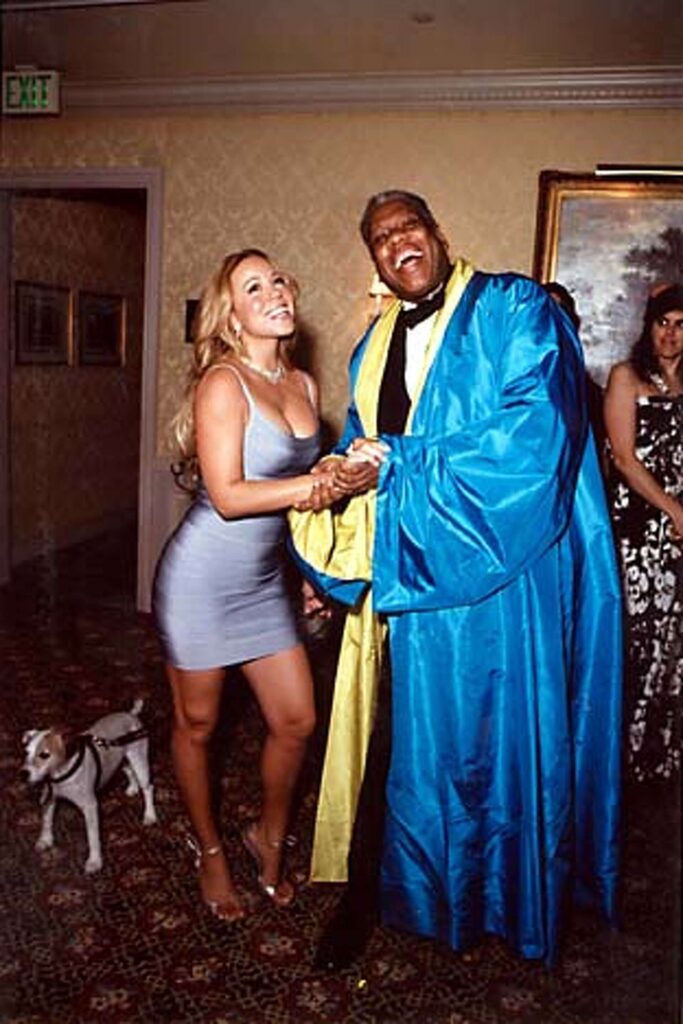
Music Video: Directed by Paul Hunter and filmed in Paris, the glamorous video features Mariah and Snoop Dogg cruising in a Maserati through iconic cityscapes, including the Pont Alexandre III bridge and luxury boutiques along the Champs-Élysées. Styled in designer outfits, Mariah struts through high-end stores like Louis Vuitton and models on an impromptu runway, playing up the song’s flirtatious mood. The sleek, fashion-forward visuals helped position “Say Somethin’” as one of Carey’s chicest clips and contributed to its rotation on MTV and VH1 despite modest radio support.
Chart Performance: Released in 2006 as the album’s final single in some markets, “Say Somethin’” had a modest chart showing. In the U.S., it barely scratched the Hot 100, peaking at No. 79 – partly because by spring 2006 the album had already yielded multiple hits and this single received limited promotion. It did fare better on specific charts: thanks to club remixes, “Say Somethin’” hit No. 1 on Billboard’s Dance Club Songs chart, giving Carey yet another chart-topper in a different format.
Internationally, the song saw moderate success. In Australia it debuted at No. 26, and it reached the lower rungs of the top 40 in countries like Germany and the United Kingdom. While not a huge commercial smash, the single did help maintain Mimi’s presence on radio into 2006 and added a different flavor to Mariah’s hit run.
Certifications & Sales: “Say Somethin’” did not accumulate significant sales to earn certifications in major markets. It sold decently as a digital single among Mariah’s core fanbase, but its late release meant that many consumers already owned the album. Across all platforms, “Say Somethin’” has sold over 700 thousand equivalent copies worldwide.
Nonetheless, its music video – shot in Paris with Mariah and Snoop cruising in a convertible and living the high life – received heavy rotation on MTV and VH1, becoming a minor visual hit. In retrospective reviews of Mimi, “Say Somethin’” is often noted as a fun departure from the formula: a midtempo jam that paired two ’90s icons (Mariah and Snoop) with the 2000s’ hottest producers. It adds a touch of cool, carefree flair to the album’s sequence, illustrating Carey’s willingness to experiment with new sounds.
“Stay The Night”
Songwriters: Mariah Carey, Kanye West, John Stephens (John Legend), Harold Lilly; Sample composers: Thom Bell, Linda Creed
Background: “Stay the Night” brings a rich, retro-soul flavor to the album. Mariah co-wrote it with Kanye West (who also produced the track) and a team including John Legend and Harold Lilly. The song prominently samples “Betcha by Golly Wow” by the Stylistics – hence the classic songwriters Thom Bell and Linda Creed are credited. The sample’s sumptuous 1970s Philly soul strings and melody give “Stay the Night” a warm, nostalgic feel. Carey loved the instrumental Kanye presented, but it was in a challenging musical key; she decided to keep that key, resulting in one of her most impressively belted vocal performances on the album.
Mariah described the song as having an “old-schoolish, Jackson 5-type vibe” in its bouncing groove. Lyrically, “Stay the Night” is about yearning to spend a little more time with a lover even when you know the relationship is complicated. With real drums, lush piano, and background harmonies, the track stands out as a fusion of contemporary R&B and vintage Motown-esque charm.
Chart Performance, Certifications & Legacy: As an album track, “Stay the Night” was not released as a single, so it did not chart on major Billboard surveys. However, it became a fan-adored song and received praise in album reviews – often singled out as an example of Mariah’s willingness to experiment with classic soul styles.
Some radio stations, especially urban AC formats, gave “Stay the Night” a bit of unsolicited play given Kanye West’s involvement and the song’s undeniable appeal.
While “Stay the Night” didn’t garner certifications, it contributed significantly to the album’s critical acclaim. Across all platforms, the song has sold an equivalent of over 200 thousand copies worldwide. Many reviewers highlighted the track and Rolling Stone noted how Mariah “found a new way to channel old soul” through this song.
For Kanye West, who was then solidifying his own legendary status, “Stay the Night” represented one of his earliest collaborations with a superstar vocalist, and its stamp of approval likely paved the way for future team-ups. In the grand scope of The Emancipation of Mimi, this song deepens the album’s narrative – reminding listeners of Carey’s roots in soulful balladry even as she embraced contemporary production elsewhere.
“Get Your Number (feat. Jermaine Dupri)”
Songwriters: Mariah Carey, Jermaine Dupri, Johntá Austin, Bryan-Michael Cox, James Phillips (LRoc); Sample writers: Steve Jolley, Tony Swain, Ashley Ingram, Lee John
Background: “Get Your Number” is a flirtatious, funky track built around a sample of “Just an Illusion” (1982) by the British R&B group Imagination. The song’s groove and bassline are lifted from that early-’80s hit, giving it a slick retro feel combined with modern R&B production. Mariah co-wrote the track with Jermaine Dupri and his team (the same core team behind “We Belong Together” and “Shake It Off”), and Dupri also provides guest vocals throughout, essentially acting as the hype-man in the song.
Lyrically, it’s one of Carey’s most straightforwardly playful songs – the protagonist confidently approaches someone at a club and asks for his phone number. Mariah’s delivery is sassy and fun, showing her flirty side. Interestingly, “Get Your Number” was released as a single in international markets only (not in the U.S.), often as a double A-side with “Shake It Off.” This strategy was likely because the song’s sample and vibe were seen as especially appealing to European audiences.

Music Video: The video for “Get Your Number” captures the playful, sassy spirit of the song. Set in an upscale nightclub, it shows Mariah moving through a stylish party scene, dazzling in a series of glamorous outfits. Jermaine Dupri makes several appearances, echoing his ad-libs from the song. With neon lighting, champagne-drenched scenes, and Carey confidently in the spotlight, the video amplifies the flirtatious energy of the track. It became a favorite on international music channels and added a layer of visual fun to the single’s campaign—making us wish more videos were done with the passion and perfection of her videos during the Emancipation era.
Chart Performance, Certifications & Legacy: In Europe and other regions, “Get Your Number” enjoyed solid chart success. In the UK, where it was packaged as a double A-side with “Shake It Off,” it reached No. 9 on the UK Singles Chart in late 2005, giving Carey yet another UK top ten. Across continental Europe, the track also performed well: it hit the Top 10 in the Netherlands and Finland, among other countries.
In Australia, “Get Your Number” was released in early 2006 as the fifth single from the album and peaked just outside the top 10 at No. 14 on the ARIA chart. New Zealand saw a more modest peak of No. 34. Because it wasn’t released stateside, it did not appear on U.S. charts, though import singles were popular among fans.
In the UK, the double A-side single eventually earned a Silver certification (combined with “Shake It Off”) for over 200,000 units sold. Across all platforms, “Get Your Number” on its own has sold over 500 thousand equivalent units globally.
While not a blockbuster on par with Mimi’s big hits, “Get Your Number” has secured its place as a fan-favorite bop—cited as one of Mariah’s catchiest uptempo tracks of the 2000s. Its confident vocals, retro-slick production, and club appeal have kept it in regular rotation among fans and DJs alike, adding to the album’s lively, genre-blending legacy.
“One and Only (feat. Twista)”
Songwriters: Mariah Carey, Stanley “Six July” Brown (The Legendary Traxster), Carl Mitchell (Twista)
Background: “One and Only” is a sultry R&B/hip-hop collaboration that pairs Mariah with Chicago rapper Twista, known for his lightning-fast flow. The song was co-written and produced by Traxster (a Chicago producer behind some of Twista’s hits), giving it a darker, street-oriented edge compared to the album’s other tracks. The beat is slow and hypnotic, with a heavy bass thump and brooding synth undertones – a perfect canvas for Twista’s rapid-fire verse and Mariah’s melismatic ad-libs.
Lyrically, the song finds Mariah asserting that she should be her lover’s “one and only” girl, blending vulnerability with confidence. She delivers her verses in a sexy, whispery tone, then opens up with powerful vocals in the chorus. Twista’s guest verse, laid in the middle of the track, serves as a male perspective responding to Mariah’s plea, delivered in his signature double-time rap. This kind of R&B/rap duet was familiar territory for Carey (who had pioneered pop/R&B-rap fusions in the ’90s), yet “One and Only” feels uniquely moody and intimate within Mimi’s context.
Chart Performance & Remixes: “One and Only” was not released as a stand-alone single, so it did not chart on major pop charts. Twista included a version titled “So Lonely” on his 2005 album The Day After, which saw minor action on R&B charts. The original track gained some urban radio airplay and was appreciated as a darker, edgier deep cut within the album. Twista’s alternate version, “So Lonely” (Part II), was also included in the Multi-Platinum Edition of Mimi, featuring re-recorded vocals and production by Rodney Jerkins. DJs like DJ Clue and DJ Envy created unofficial blends for mid-2000s mixtapes.
Certifications & Legacy: As an album track, “One and Only” did not have any certifications. Across digital and streaming platforms, the song is nearing 200 thousand worldwide equivalent sales.
Its legacy lies in showcasing Mariah’s continued commitment to hip-hop authenticity. Bringing in Twista – who was fresh off his own mid-2000s hits – gave the album credibility and edge. A review from The Daily Vault highlighted the track as part of a string of party collaborations with top-tier rappers that gave the album “a much edgier feel.” It’s the kind of track that may fly under the radar to casual listeners, but devotees appreciate its sultry mood. Notably, it also demonstrated Mariah’s knack for adapting to different rap styles: Twista’s machine-gun delivery is very different from Ol’ Dirty Bastard’s or Jay-Z’s, yet Mariah effortlessly complements it, proving her versatility as an R&B vocalist who can hold her own alongside the fastest of rappers.

“Circles”
Songwriters: Mariah Carey, James “Big Jim” Wright
Background: “Circles” is a heartfelt slow jam that harks back to Mariah’s adult contemporary ballads of the ’90s, with a hint of blues influence. Co-written with Big Jim Wright (who played a large role in the album’s ballads), the song is built on a simple arrangement: a gentle piano line, subtle drums, and soulful background vocals. Mariah’s lyrics describe the emotional “circles” one runs in after a breakup – the sleepless nights, the constant replaying of memories, and the inability to get over lost love. There’s a raw simplicity to the songwriting, conveying heartbreak in plain language that anyone can relate to.
The recording of “Circles” features live instrumentation and a warm, analog vocal tone that gives the track a distinctly organic feel, consistent with Mariah’s intention to evoke old-school balladry.
Chart Performance & Remixes: “Circles” was not released as a single, so it did not chart. Critics in 2005 pointed to “Circles” as evidence that Carey hadn’t abandoned her adult contemporary roots even as she embraced hip-hop elsewhere on the album. To fans delight, the 20th anniversary edition will include an unreleased a cappella version, as she has done with special tracks in previous anniversary editions.
One notable remix is the E-Lie Remix, which overlays Mariah’s vocals with a reworked instrumental inspired by slow-burning neo-soul, giving the track a new atmospheric dimension while preserving its emotional core. Originally uploaded to SoundCloud, the remix gained popularity and caught the attention of Ministry of Sound, who offered E-Lie a contract. According to E-Lie in an interview with Republic-Online, “Mariah heard the remix, loved it, and wanted to be featured on it“—leading to its official release on streaming platforms.
Legacy: Though not a commercial single, “Circles” holds a special place in Mimi’s legacy for its emotional honesty. Pitchfork highlighted the track’s classic Philadelphia soul influence and praised Mariah’s harmonizing, writing that her vocals ‘evoke infinity mirrors in the most glamorous discotheques, so glittering as to be hallucinogenic.’ For Mariah, it was important to include songs like “Circles” on the album to anchor the project in genuine feelings. Across digital and streaming platforms, “Circles” has sold over 250 thousand equivalent units worldwide. It remains a fan-favorite for its vocal performance and universal theme of heartbreak.
“Your Girl”
Songwriters: Mariah Carey, Mark Shemer (Scram Jones)
Background: “Your Girl” is an upbeat R&B track with a bouncy, old-school vibe. Mariah teamed up with producer Scram Jones for this song – a bit of an outlier collaboration, as most of the album’s other tracks were with her usual producers. Scram Jones provided a track with a slinky funk groove and a touch of 70s soul in its DNA, over which Mariah wrote a playful lyric about vying for a man’s attention.
Essentially, she’s telling a guy that the woman he’s currently with isn’t treating him right, and Mariah could be “your girl” and do better. The song is filled with layered harmonies and doo-wop-style background vocals (all performed by Carey) that almost give it a Jackson 5 or early Motown flavor. In fact, the bridge features a spirited call-and-response that sounds like a nod to a bygone era of girl-group R&B. “Your Girl” is a lighter moment on the album – flirty, youthful, and just plain fun. Carey has said she wanted a song on Mimi that was “just a happy, throwback R&B jam,” according to her remarks in promotional interviews around the album’s release.
Chart Performance, Remixes & Legacy: “Your Girl” was not released as a single and thus did not chart. It remains one of the lesser-known songs on The Emancipation of Mimi, mainly because it was not performed widely nor pushed on radio. That said, listeners who delve into the full album often appreciate it as a breezy palate cleanser between the heavier ballads and big singles.
Two official remixes of “Your Girl” were released during the MC30 celebrations. The first, known as the Diplomat Remix, features Cam’ron, Juelz Santana, and the Diplomats, while the second includes guest verses from N.O.R.E. Both of these remixes are set to appear on the upcoming Emancipation of Mimi 20th Anniversary Special Edition.
“Your Girl” may not be widely known outside the fan community, but it adds an important color to the Mimi album. It’s the kind of song that shows Mariah’s versatility – she’s not only belting ballads and crafting chart-toppers, but also comfortably grooving on an effervescent R&B tune. The track’s lighthearted nature foreshadowed some of the Motown influences she would later explore (for instance, in her 2014 album Me. I Am Mariah…, she dabbled in throwback soul again). Across digital and streaming platforms, the song is nearing 200 thousand equivalent single sales worldwide.
“I Wish You Knew”
Songwriters: Mariah Carey, James “Big Jim” Wright.
Background: “I Wish You Knew” is a slow-burning ballad styled as a live concert recording. The track opens with Mariah addressing an imaginary audience, followed by a soulful performance with added crowd effects. The lyrics express emotional longing, supported by gospel-inspired instrumentation, layered vocals, and a spoken ad lib. Mariah has cited classic Diana Ross concert moments as the inspiration for its vintage stage feel.
Chart Performance & Legacy: Not a single, “I Wish You Knew” didn’t chart, but it holds a special place for those who appreciate Mariah’s love of soul traditions and live vocal aesthetics. The track was somewhat overshadowed by the album’s other ballads (“We Belong Together” and “Fly Like a Bird”), but remains a standout for its emotional rawness.
“I Wish You Knew” stands as a testament to Mariah’s respect for soul music traditions. Although it’s one of the lesser-streamed tracks on the album in the modern era, it remains a favorite for those who relish Mariah’s vocal nuances – the little riffs and spoken asides in “I Wish You Knew” offer a glimpse into her personality and her connection with an audience. Like “Your Girl,” “I Wish You Knew” is also on its way to 200 thousand equivalent single sales worldwide. In sum, it’s a soulful serenade that adds authenticity and warmth to the album’s flow, as if Mariah is right there on stage, singing her heart out just for you.
“To The Floor (feat. Nelly)”
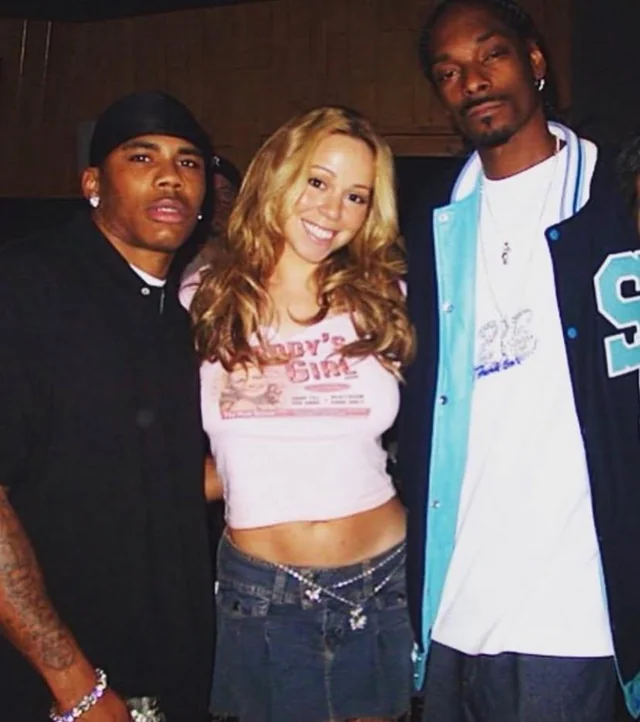
Songwriters: Mariah Carey, Pharrell Williams, Chad Hugo, Cornell “Nelly” Haynes.
Background: “To the Floor” is a sultry club track that unites Mariah with hip-hop star Nelly and super-producers The Neptunes (Pharrell & Chad) for a second time on the album. If “Say Somethin’” was breezy, “To the Floor” is downright steamy – the song’s lyrics and vibe are all about hitting the club dancefloor and getting lost in the music (and in each other). The production is signature Neptunes: a minimalist yet funky beat with deep bass hits, hand-clap percussion, and synth accents that slither through the mix.
Chart Performance, Remixes & Legacy: As an album track, “To the Floor” wasn’t a single and thus did not chart independently. It did, however, get some club play; hip-hop DJs in a few markets spun the track in nightclubs due to Nelly’s presence and the grinding beat.
While “To the Floor” may not be the most remembered song from The Emancipation of Mimi, it is a time capsule of mid-2000s R&B/hip-hop trends. It encapsulates the era’s love for rap-sung collaborations and Neptunes beats. Across digital and streaming platforms, the song is nearing 100 thousand single equivalent copies worldwide.
For Mariah, it was another chance to assert her relevance in the R&B/hip-hop world – jamming with one of the decade’s hottest rappers on a track that could easily slide into a mixtape or a Hot 97 radio set. Fans of Mariah’s more hip-hop-oriented work often appreciate “To the Floor” for its hypnotic production and Mariah’s sexy vibe. In the album’s sequencing, it serves as a cool-down after the emotional intensity of “I Wish You Knew,” leading listeners into the final act of the record with a head-nodding groove.
“Joy Ride”
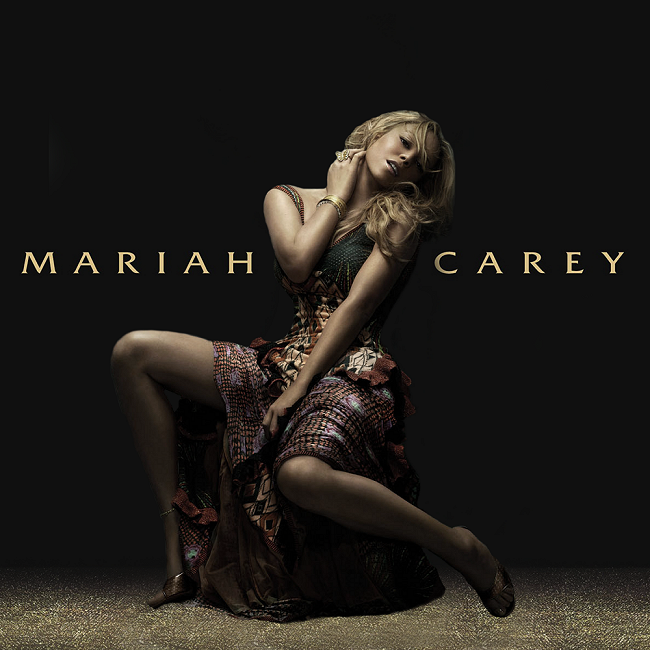
Songwriters: Mariah Carey, Marc Shaffer (Young Genius).
Background: “Joy Ride” is a romantic slow jam that floats along on dreamy harmonies and a gentle beat. Written by Mariah with a relatively unknown producer who goes by Young Genius (Marc Shaffer), this song is often noted for its lush, layered vocals – Mariah stacks her voice into rich chords that cascade throughout the track, almost like a vocal orchestra. Lyrically, “Joy Ride” uses the metaphor of a blissful car ride to describe the feeling of being in love: it’s smooth, easy, and you never want it to end. Her vocals here are notably tender – she doesn’t belt until a brief moment towards the end, instead choosing a more intimate delivery that draws the listener in. Interestingly, the song was only added towards the end as Mariah wasn’t getting clearance for the sample used in “When I Feel It” in time for the album release.
Legacy: It contributes to the album’s narrative by highlighting the happiness and contentment that balance the heartache heard elsewhere. Some listeners interpret “Joy Ride” as Mariah reflecting on the journey she’s been through – finally finding a peaceful moment of love amidst the ups and downs. In retrospect, while it wasn’t a commercial centerpiece of the album, “Joy Ride” is appreciated as one of those Mariah Carey album tracks that age gracefully. Its warm, timeless quality means it wouldn’t feel out of place on a playlist next to her 90s ballads or her 2010s slow jams. Despite never having been released as a single, the song has earned enough digital impact to garner almost 200 thousand copies worldwide.
14. “Fly Like a Bird”
Songwriters: Mariah Carey, James “Big Jim” Wright.
Background: Serving as the grand finale of the album, “Fly Like a Bird” is a powerful gospel-R&B ballad that Mariah has often cited as her personal favorite on Mimi. She co-wrote it with Big Jim Wright in the late hours of a writing session – Mariah started humming a gospel melody and the duo built the song around a simple piano progression and church-inspired chord changes. Deeply spiritual in theme, the lyrics read like a prayer: “Fly like a bird, take to the sky / I need you now, Lord, carry me high!” Mariah pours her heart out about seeking strength and hope to carry on, clearly drawing on her own trials for inspiration. To enhance the authentic gospel feel, Mariah invited her pastor, Clarence Keaton, to record a spoken scripture intro and bridge for the song – he quotes two Bible verses as the music swells, adding to the church service atmosphere. The arrangement builds from a gentle beginning to a tour-de-force climax with a full choir of Mariah’s layered vocals, modulations, and her signature whistle notes soaring high.
Chart Performance: Though not a commercial single in the traditional sense, “Fly Like a Bird” was released as a promotional radio single to gospel and R&B stations in early 2006 (simultaneously as “Say Somethin’” went to pop formats). It became quite successful on U.S. adult R&B and gospel charts: it reached No. 19 on the Billboard Hot R&B/Hip-Hop Songs chart and impressively hit No. 1 on the Adult R&B chart (Urban AC), where it stayed atop for six weeks in 2006. On Billboard’s Bubbling Under Hot 100 (the extension of the Hot 100), it got as high as No. 4, meaning it came very close to making the main Hot 100 purely on airplay. “Fly Like a Bird” also won the 2006 NAACP Image Award for Outstanding Song, reflecting its impact in the R&B and gospel community. Mariah’s show-stopping live performances of the song further boosted its profile: at the 48th Grammy Awards in February 2006, she closed her medley with “Fly Like a Bird,” complete with a full gospel choir, bringing the star-studded audience to its feet. This performance, broadcast globally, introduced the song to many who might not have heard it on the radio.

Certifications & Legacy: “Fly Like a Bird,” while not a multi-platinum single, became a modern gospel classic. It is frequently performed by contestants on singing competitions (who aim to emulate Mariah’s vocal runs) and by church choirs that adapt it for Sunday services. For Mariah, the song’s importance is evident in how often she included it in her tour setlists following Mimi’s release – from The Adventures of Mimi Tour (2006) to her later Caution World Tour (2019), “Fly Like a Bird” remained a staple. It’s widely seen as one of her career-defining album tracks that stands alongside her biggest hits in terms of fan admiration. Many critics have noted that if released at a different time, “Fly Like a Bird” could have been a massive crossover hit; regardless, its role in closing The Emancipation of Mimi is perfect. The song has earned digital and streaming attention, having garnered over 500 thousand copies worldwide.

